Up until a few weeks ago, if I ever caught one of my workshop participants bracketing exposures, I’d smack their hand and tut-tut at them. “There’s NO need to bracket, your camera can easily capture the dynamic range of this scene in a single shot,” I’d tell them time and time again.
For many years I’ve felt like bracketing was a lingering vestige from the digital photography of a decade ago. In that era, you almost always HAD to bracket (or use GND filters) in order to capture the full dynamic range of the scene in front of you. Bracketing was a great tool for overcoming the limits of our cameras. However, this deficiency in camera technology also gave rise to a “spray and pray” approach to exposure for many photographers. Rather than try to understand metering or the histogram, it was far easier to simply shoot 5, 7, or even 9 different exposures of every scene. Because storage was cheap even then, one could simply overshoot and pick the best single exposure later. Or if the dynamic range of the scene was too extreme, to combine the exposures through blending or HDR.
But as camera technology has advanced to the point where every camera contains a sensor that captures 14 or even 15 stops of light, it’s rare to encounter a scene that can’t be fully captured, from the darkest darks to the brightest brights, in a single exposure. Even when shooting directly into the sun it’s possible to create an exposure that’s full of detail everywhere except the sun itself. All you have to do is underexpose like crazy then brighten the image in post processing. Easy peasy.
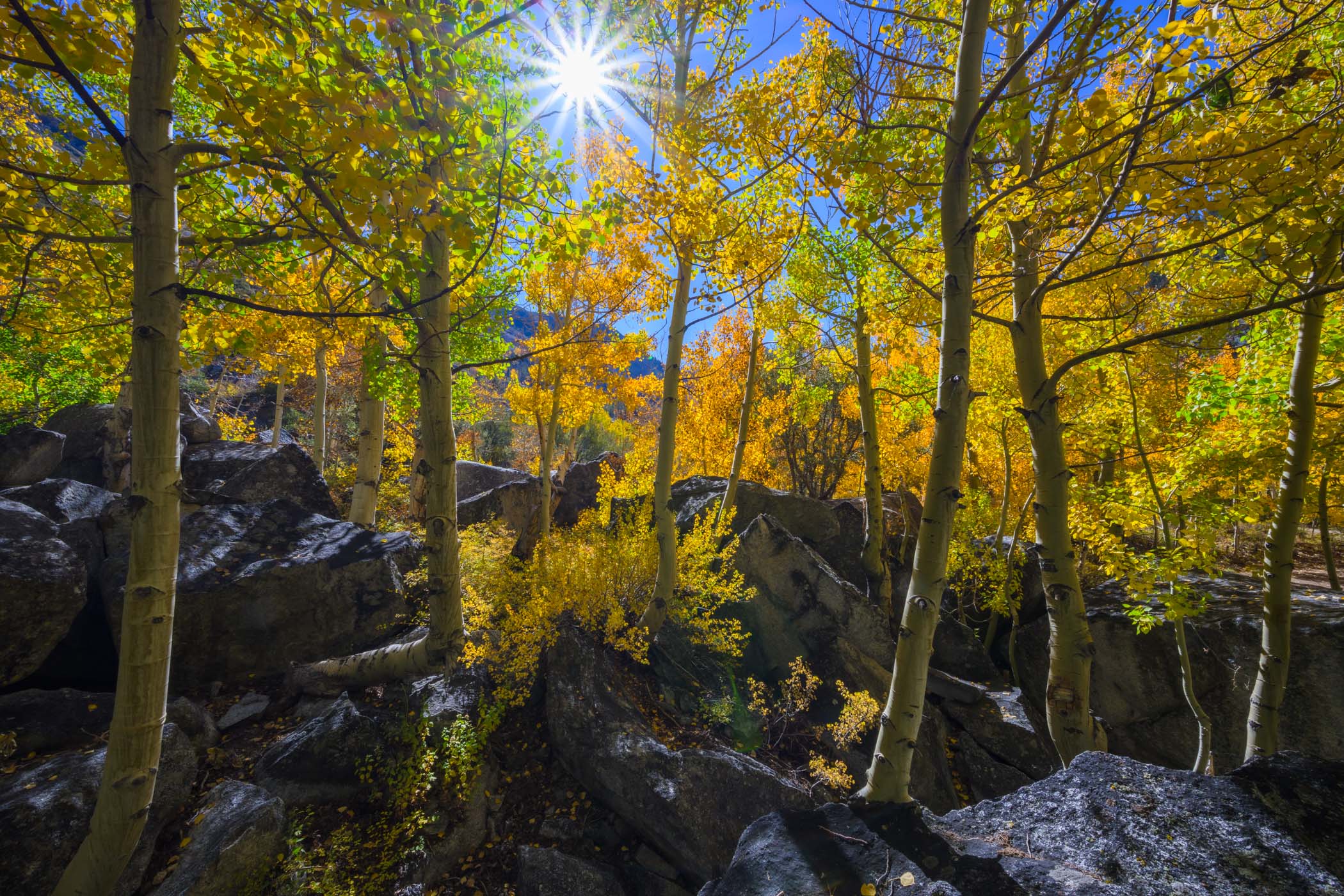
That’s why for me, bracketing has seemed like an unnecessary added step, borne more out of habit or a lack of technical understanding, rather than done for a specific purpose. Hence my consistent chiding over the past 10 years: YOU DON’T NEED TO BRACKET.
But on a chilly morning during my 2024 New Zealand Photo Tour, I had a conversation with one of my participants that began to change my way of thinking. This participant is a professional photographer; in fact he is the staff photographer for the LA Zoo, which requires him to shoot fast, at high ISOs, without a tripod. But for his landscape work during the tour he was much more deliberate: composing meticulously, shooting at low ISOs from a tripod, and bracketing every single shot, regardless of whether it was truly “necessary” or not.
When I asked him why, he responded that he was bracketing in order to blend the images later for as clean a final file as he could possibly get. If he decided to make a print, or if he wanted to push the post-processing hard, he simply wanted more data to work with. And he knew that even if his shadows or highlights weren’t clipped in a single exposure, he could still get better overall image quality by combining a couple of bracketed shots in which the exposure was optimized for each tonal range of the scene.
Now this kind of logical thinking made perfect sense to my engineering mind and I began to wonder: just how big of a difference does this actually make? I wanted an empirical, practical understanding, so I bracketed a few exposures of the scene to play with.
We were shooting a highly layered scene directly into the sun, so I started by shooting it the way I would shoot it as a single exposure, by underexposing it dramatically so that the only clipped highlights were in the sun itself. I also ensured the exposure wasn’t so dark that I would clip any shadows.
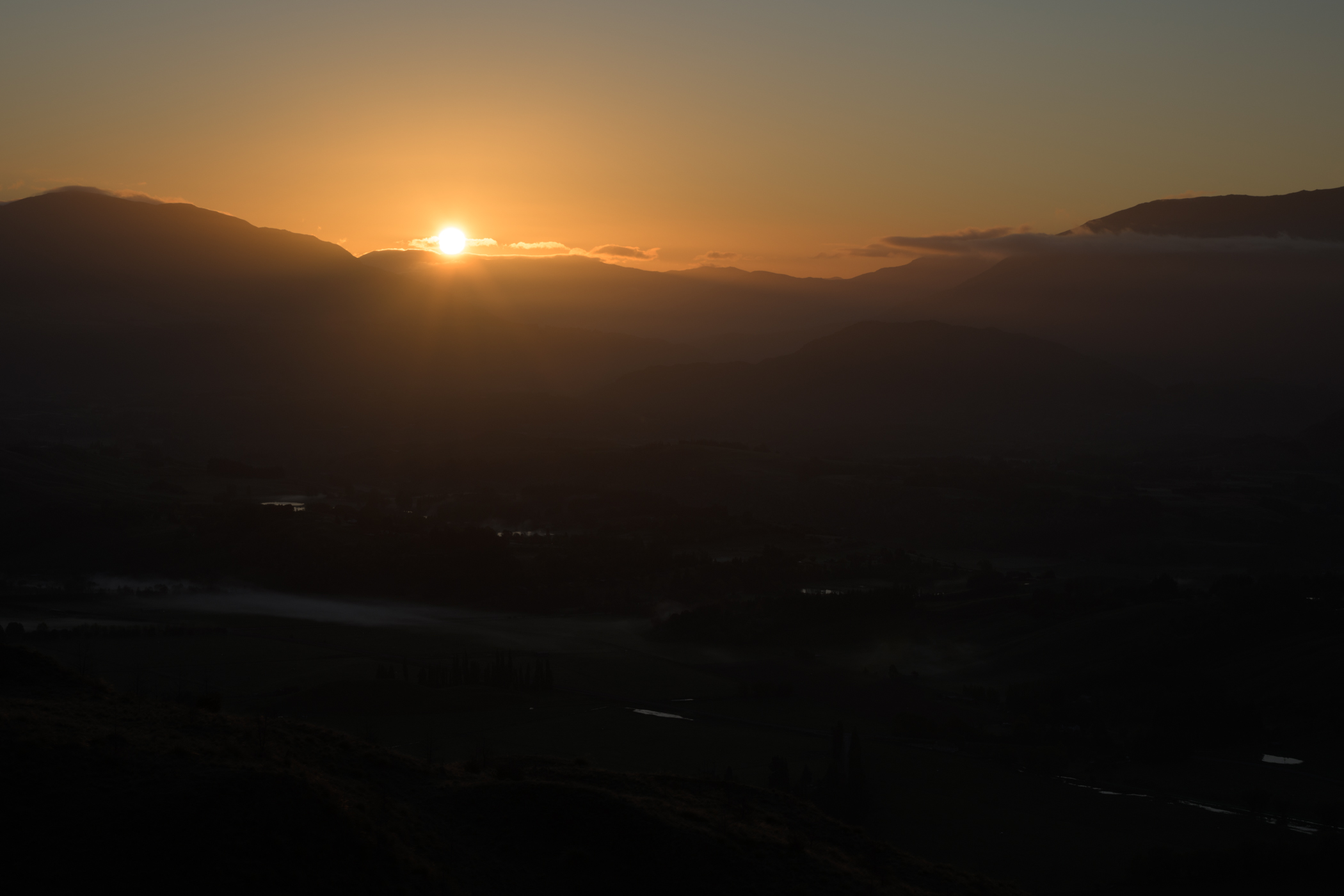
Then I shot two more exposures, +2 stops, and +4 stops.
I combined these three exposures in Lightroom using the Merge to HDR function (auto settings off). This created an HDR image right in the middle of three exposures:
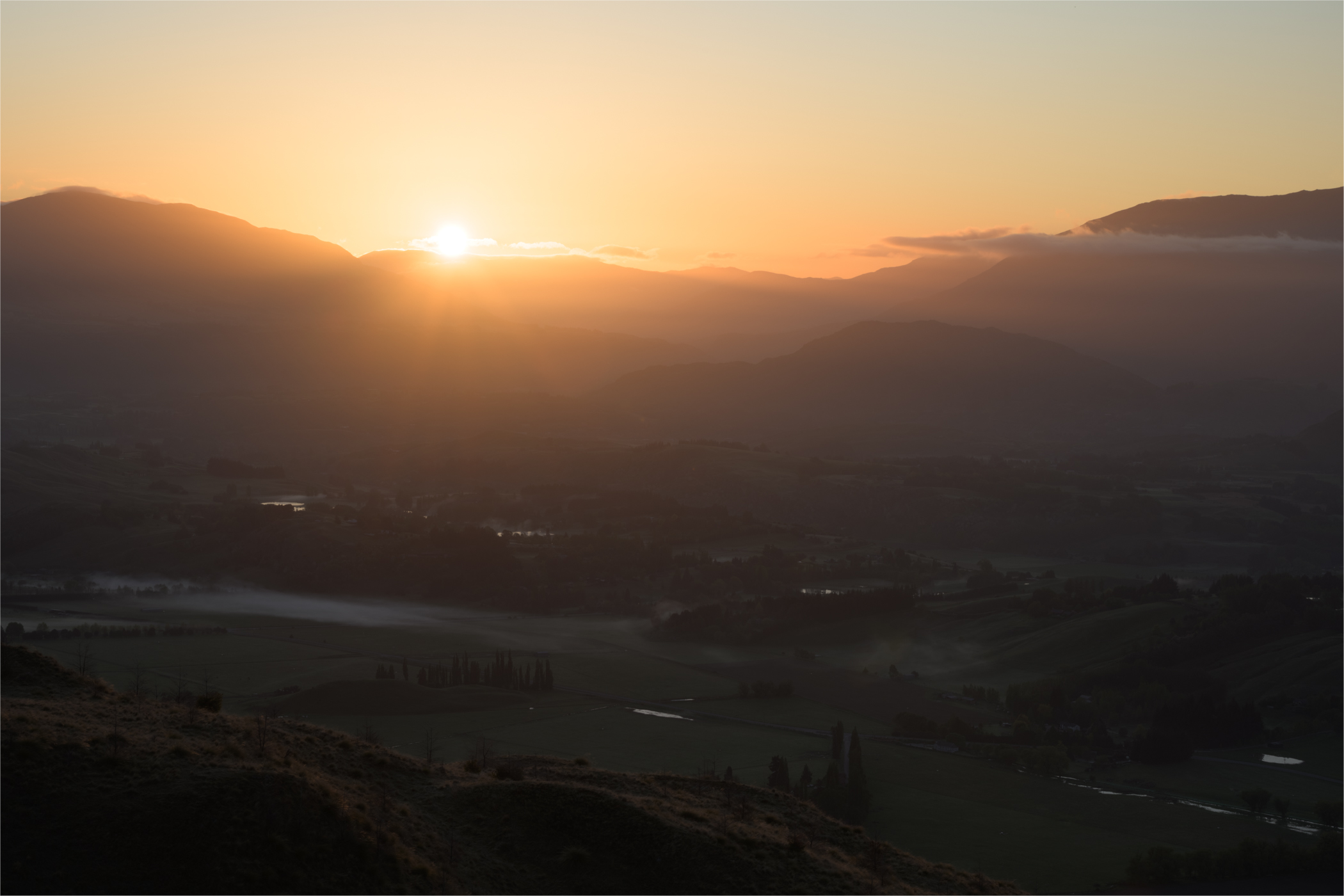
To analyze the quality difference between the images, I processed my initial shot (the darkest one) as a standalone image. This included a 3-stop exposure increase, highlight reduction, a small shadow boost, a curves adjustment, a small saturation increase, and a high amount of sharpening (because I really wanted to see how much noise was present). Then I copied these exact adjustments to the HDR image (however the HDR required only a 1-stop exposure increase to have the same overall exposure). The original shot is here on the left, HDR on the right. You can see that at first glance they are virtually identical.
Zooming in to 100% though, I have to admit I was surprised by the difference in image quality, particularly in the shadows. The single shot was somewhat noisy, which I expected, given these shadows had been boosted more than three stops. Still, the noise level wasn’t anything that would stop me from posting on social media or my website, especially with a little noise reduction.
But the HDR image was on another level of clean altogether. In fact, I’d be tempted to say it’s nearly noise free, even without applying any kind of noise reduction. It also shows a massive improvement in fine detail. Check out the difference in these crops and pay attention to areas like the fields and the houses.
50% crop:
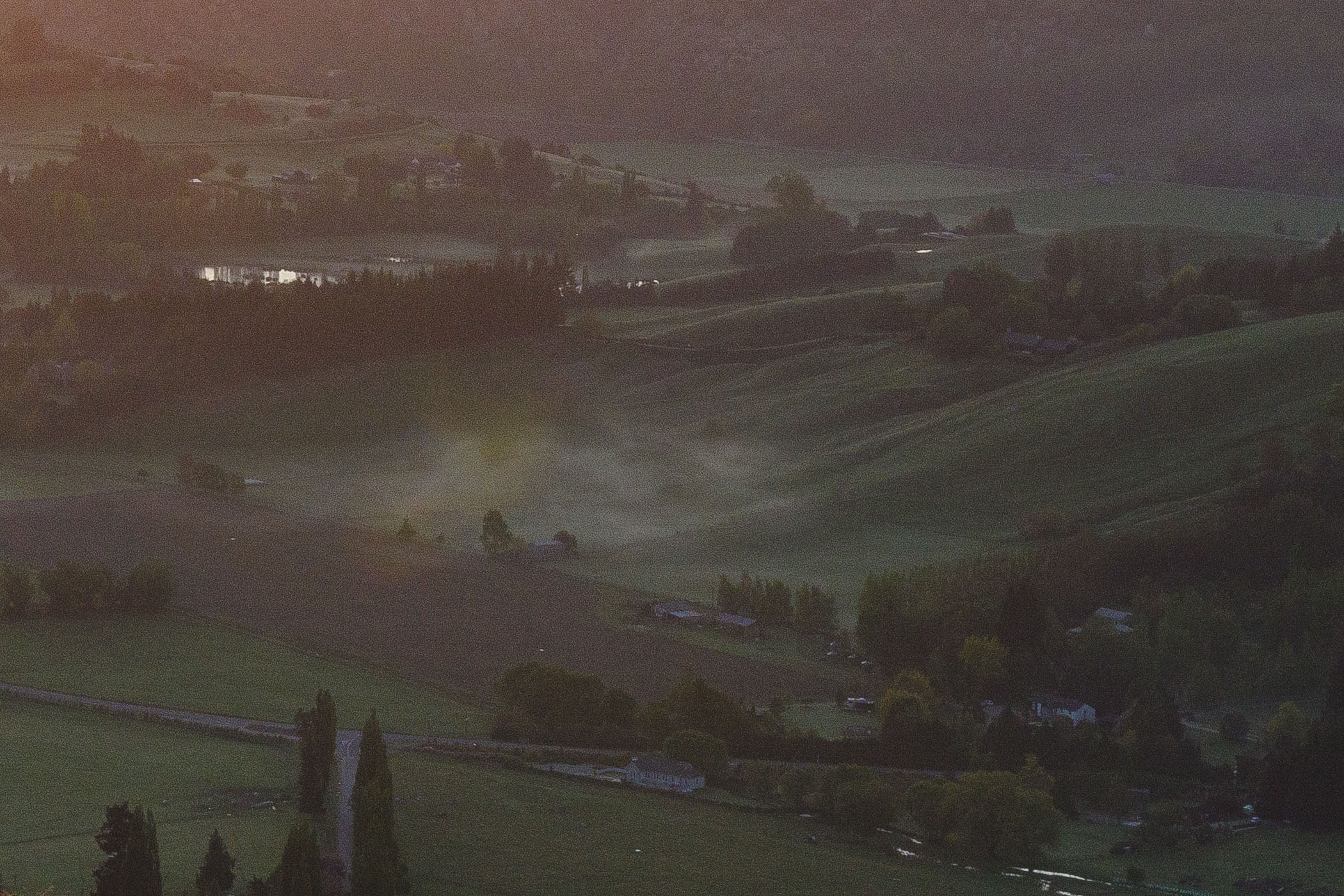
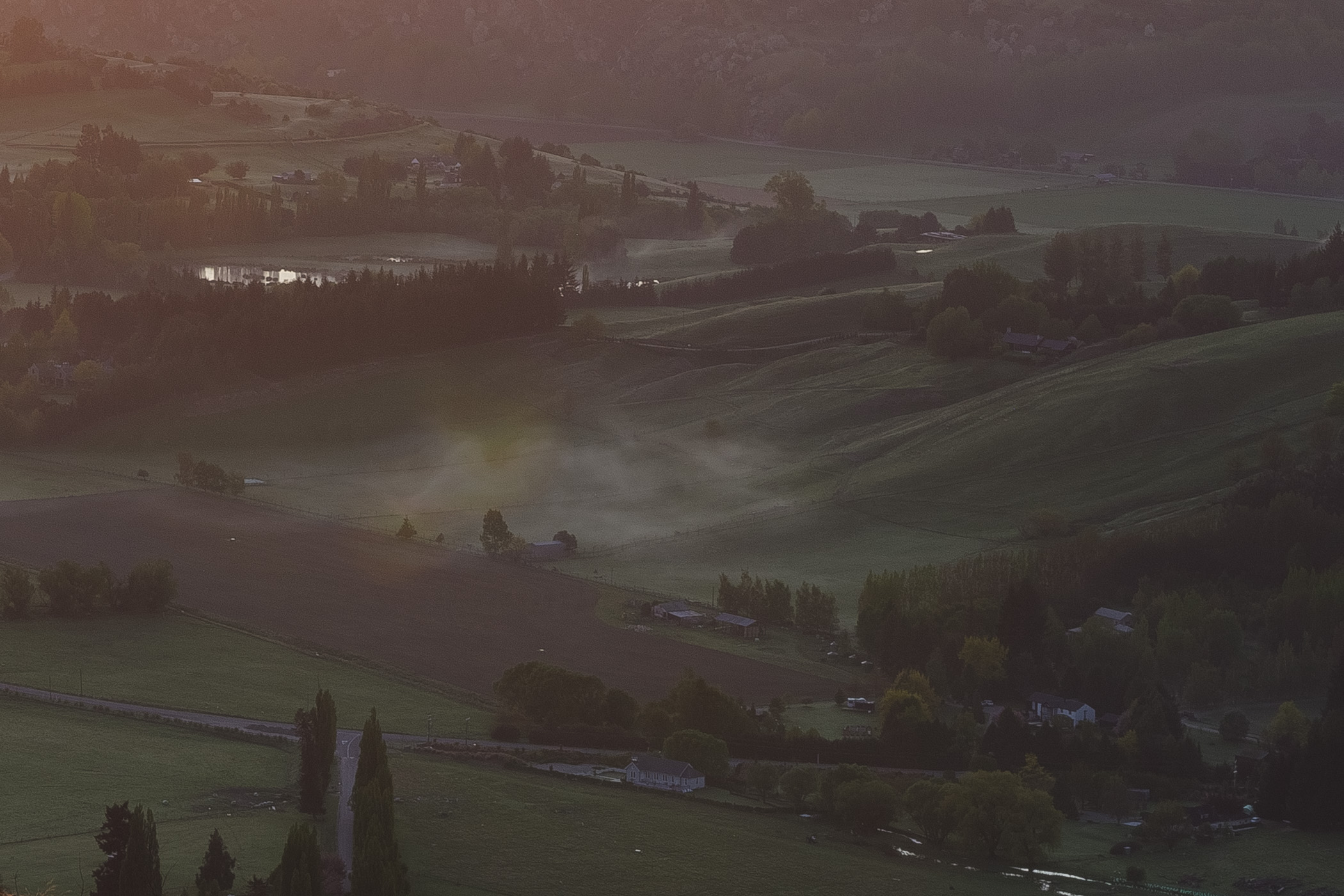
100% crop:
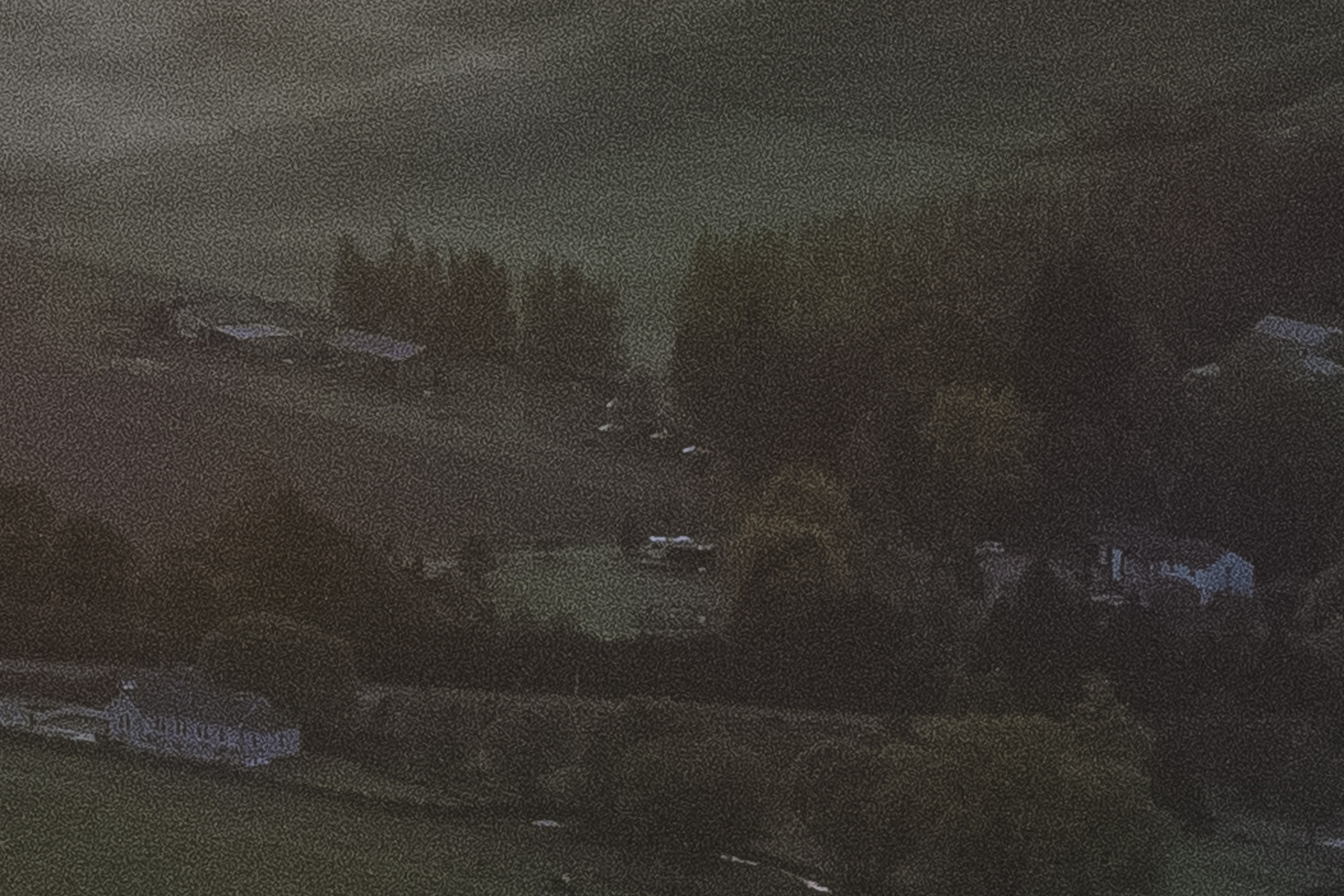
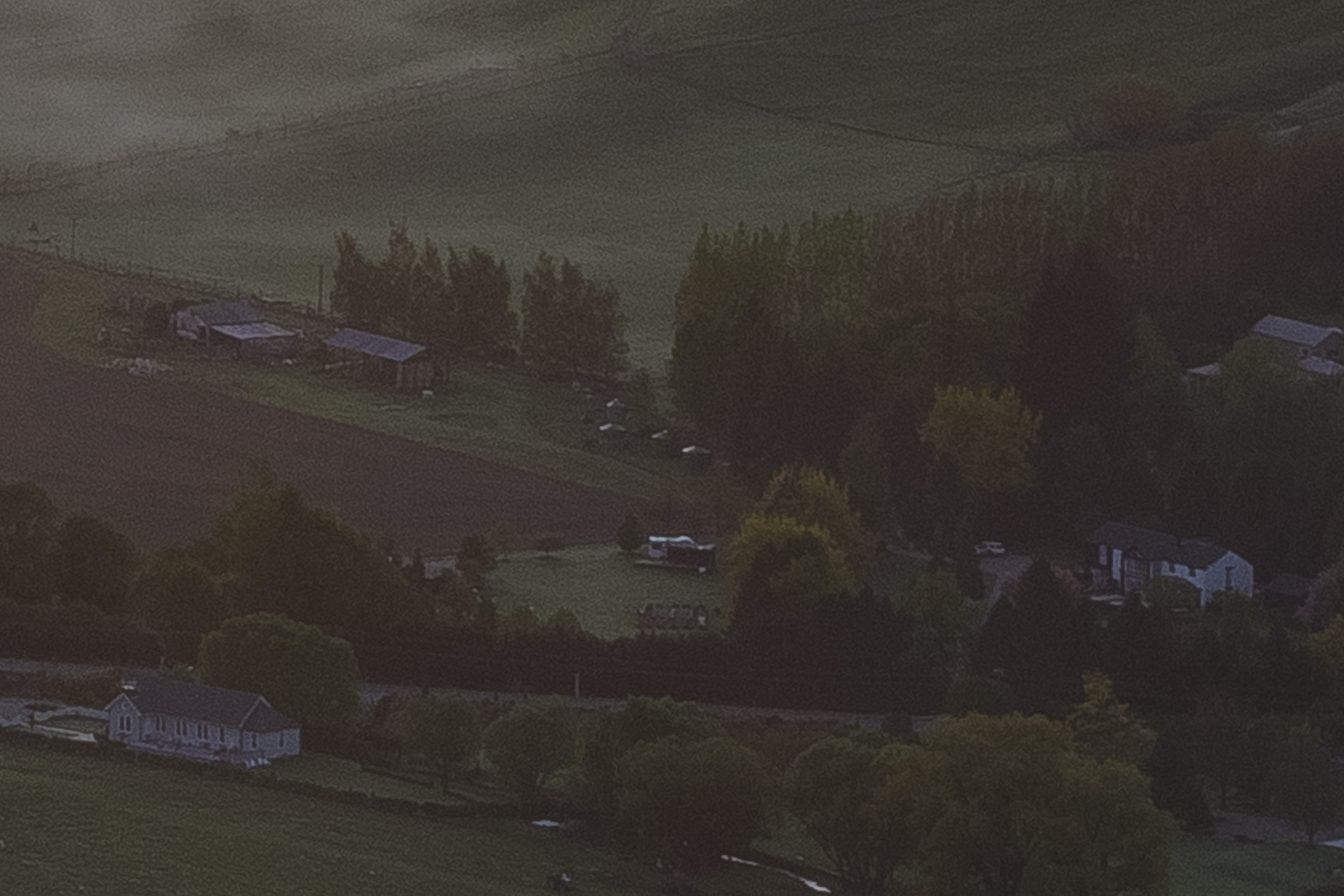
The difference is quite remarkable. If I was going to make a print of this photo or needed a full-res version for something, it’s clear that the HDR version is heads and shoulders above the single shot.
Of course, in the end, it makes perfect sense that a bracketed and blended would be cleaner than a single shot. But it wasn’t until I took the time to do this experiment that it actually stopped me in my tracks and made me reconsider my workflow and how I shoot.
So what does this mean for me going forward? It means that bracketing has become a very real part of my workflow. But don’t misunderstand. I still don’t think it’s necessary to shoot 7 exposures of every scene at -3, -2, -1, 0, +1, +2, +3 ev. Rather, I plan to use a considered approach to bracketing in order to minimize the “spray and pray” shooting while maximizing image quality at the same time.
Here are the specific bracketed exposures I”ll be shooting whenever possible/practical:
And that’s it. By utilizing just a few bracketed photos you will be able to improve your image quality, particularly in the shadows, by an incredible amount.
You probably picked up on the fact that I didn’t use any noise reduction in these sample images. Of course this makes a big difference in your image quality as well, especially since modern denoising tools are incredible. But between bracketing/blending and using software denoising, which produces the best results? In the next article I am going to look at this question in order to suss out when you should bracket and when you should you noise reduction of any kind. Stay tuned.
—
Do you bracket your exposures? If no, why not? If yes, do you have a specific reason or is it just habit? Will this article change your approach to bracketing? Let me know your thoughts in the comments below.
Thanks for reading,
– Joshua
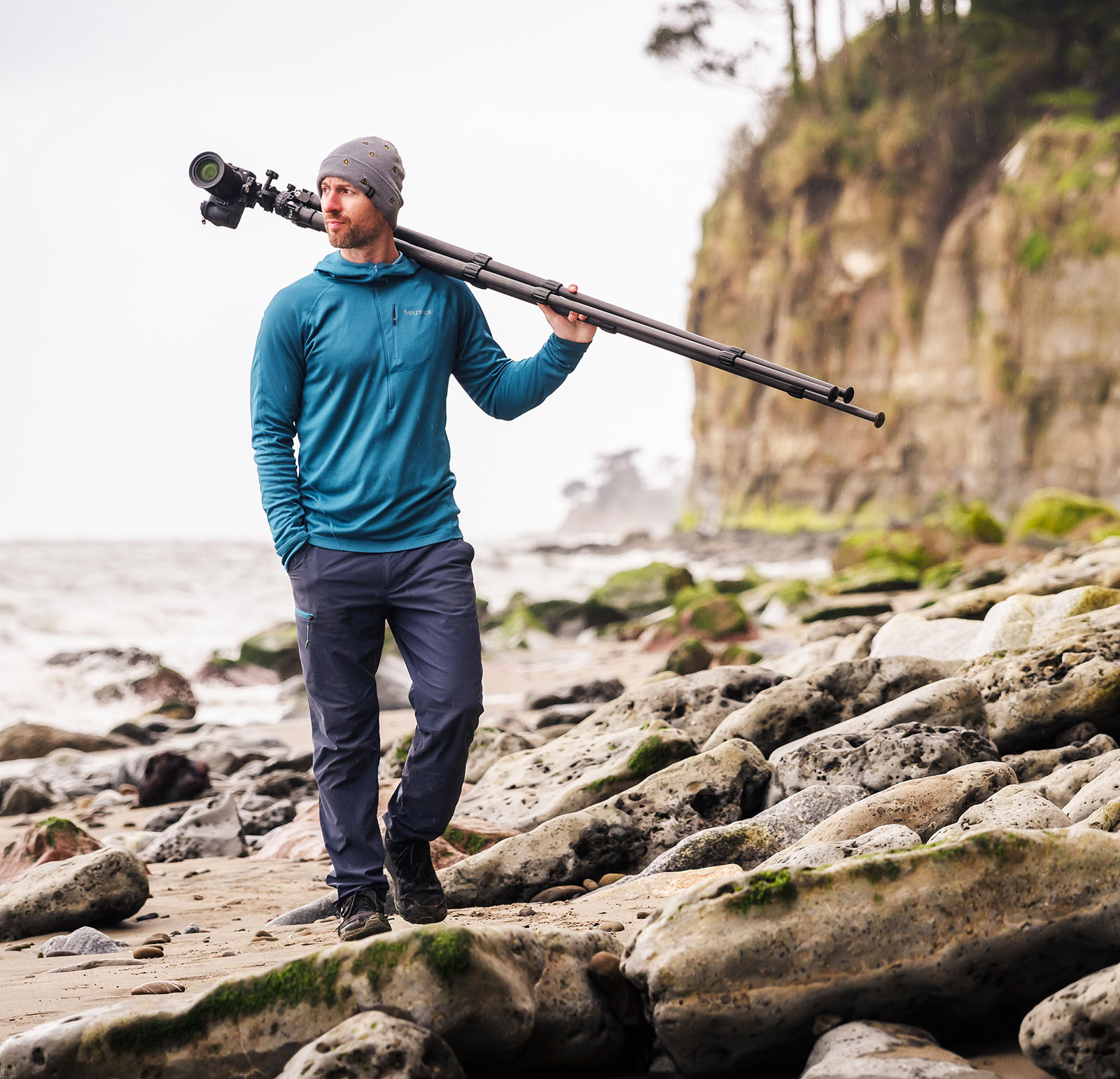
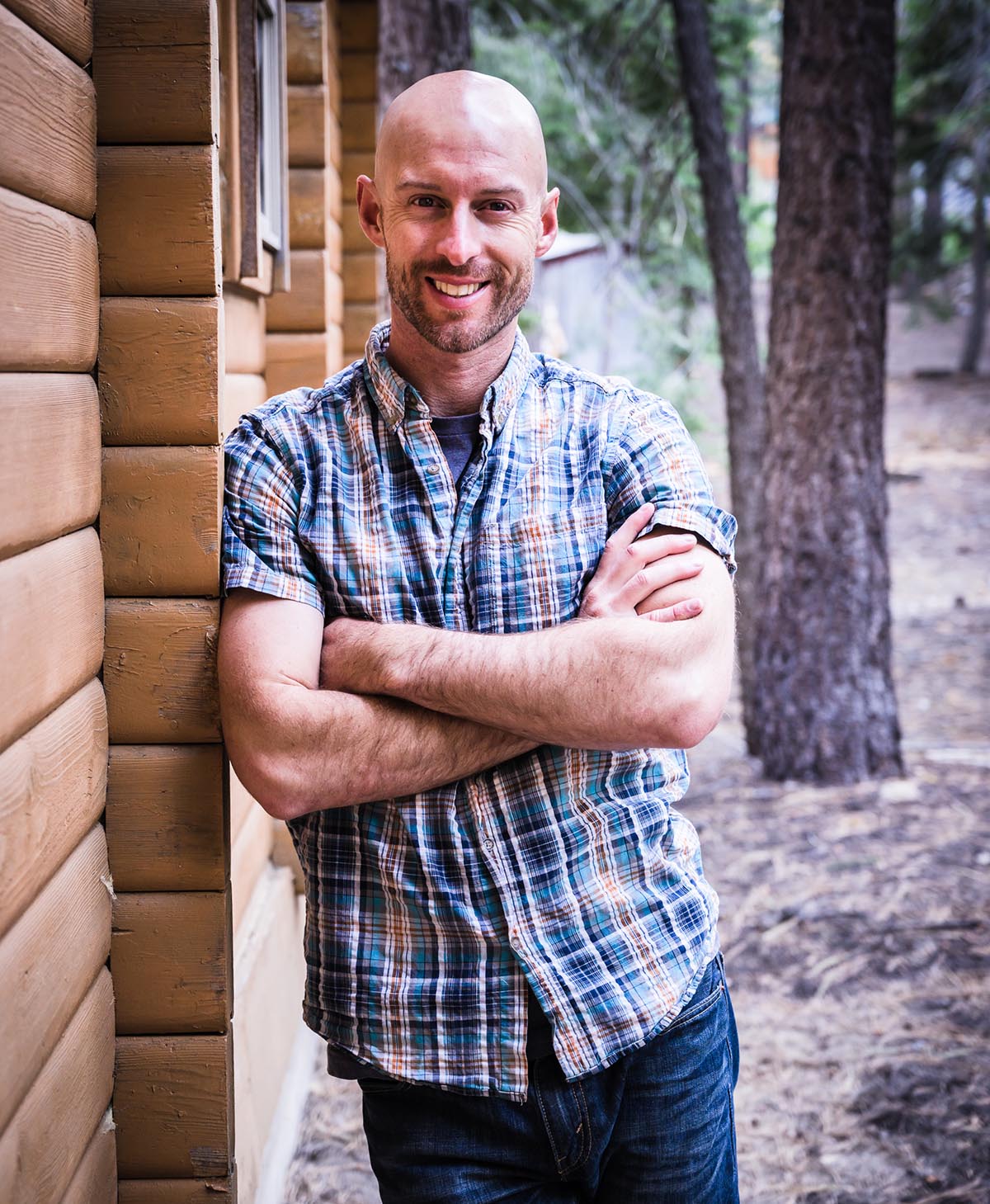
Joshua Cripps is a renowned landscape photographer who has garnered worldwide acclaim for his breathtaking images of our planet’s wild places. His photos have been published by the likes of National Geographic, NASA, CNN, BBC, and Nikon Global.
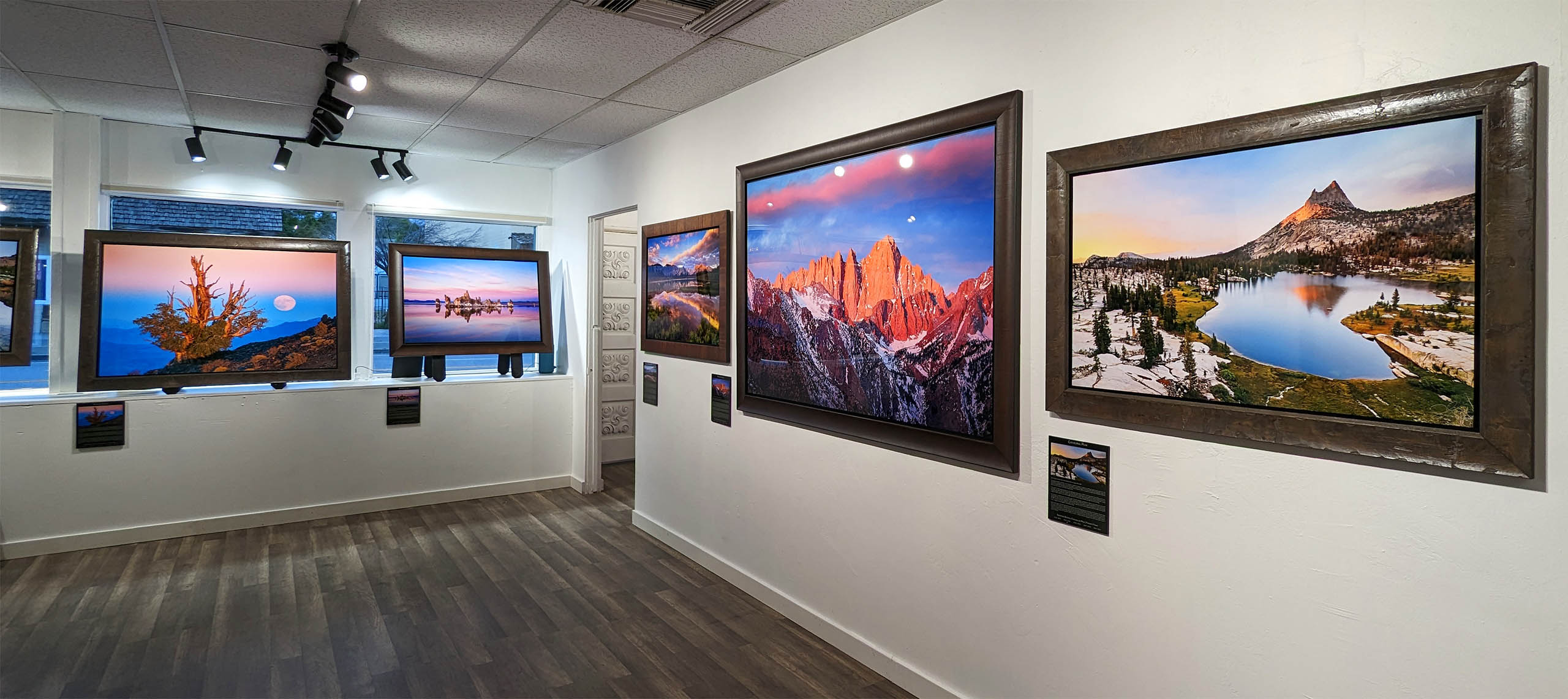
The Mt. Whitney Gallery was founded in 2023 by Joshua Cripps as a way to share his passion stunning landscapes of the Sierra Nevada and beyond.
Set at the foot of the breathtaking Sierra with a view of the range’s highest peaks, the gallery features large format, museum-caliber fine art prints of Josh’s signature photographs.
Course Login | Results Disclaimer | Terms and Conditions | Privacy Policy
© Copyright – Joshua Cripps Photography

30 Responses
Hi Joshua
Finally, a good clear description of bracketing. I had tried it some time ago but only with the most rudimentary understanding of the mechanics.
I may be missed your subsequent Newsletter, which you were going to go into more detail about bracketing/blending/denoising. Is it possible to resend the article if I did miss it?
Marilyn
Hi Marilyn, I’m happy this made sense for you!
The next article in the series is still on its way, so don’t worry, you haven’t missed anything. Should be published in the next few weeks.
Take care,
Joshua
For bracketing situations like this, you are using a tripod, right? I shoot in-water scenes of rivers, lakes, and oceans which is super challenging with so many lights and darks, but don’t believe I can use exposure bracketing handheld, right?
Hi Ann,
Yes, I’m using a tripod for these bracketed shots. But even if you are shooting handheld you might be able to bracket if you aren’t moving very much between the shots, as LR can attempt to auto-align the source images. One thing to be aware of is the more that changes between shots, the harder it will be to blend exposures. If the ocean or a river changes a lot from shot to shot, it will cause problems with the blending. So you may wish to try bracketing with your aperture instead of your shutter speed in order to have the water movement look the same from shot to shot. It will definitely require some experimentation and trial and error!
Joshua
Great essay, Josh. Since digital “film” is free, I often bracket for “insurance,” even if I am fairly confident that one exposure will suffice. When I do bracket, it’s usually a 3-image set with baseline, +2 EV, and -2 EV. I often will exploit one of the +/- 2EV images, but not both. It’s definitely helped to create some good images where one exposure (even ETTR) didn’t cut it.
Nice one, Roger. Sounds like you have a good bracketing scheme that is working well for you.
For HDR images I use to bracket but stopped with the Sony A7r3a or stopped shooting when I lost light, it was too dark. After this article I might? try again. However I will go back to a shot for the sky, mid-tone and darker….I have use Ap and move the focus box (hence changing SS) to areas of brightness or luminous that I want to capture. Back home blend in LR. When the light is going fast it is often difficult to do this that is why GND filter were so nice. The problem with using Ap is that the SS can be so slow vegetation will show movement. Then ghosting which will ruin an image. So how do you overcome this? Shoot in manual which I normally do on a tripod, adjust SS to freeze branches and let the auto ISO accommodate for increase in SS. When light is going fast, a base exposure which does not blow highlights and +2 EV may do the trick…..but then will it be a realistic image unless you do let the dark be dark and not over lighten them.
I will need to go back to the drawing board. However, I truly think (for myself) if I need to shoot HDR, the light is gone and it is time to stop shooting and just enjoy what your eye and heart will see. Put the headlamp on and walk back to the car or time to cook dinner while camping.
Amazing article with such usefull examples. Thank you for sharing. Definitely a hot topic and I walked away feeling more confident in my high DNR shooting. Keep em coming Josh. So very appreciated!
Cheers, Jim!
For me, I’m not sure I would bracket shots every time. As good as Denoise is in LR I don’t worry too much about noise these days.
That’s what I’ll be looking at in the next article. Denoise is a great tool, and for most people it’s sufficient. But bracketing still wins in certain cases.
When I was editing my cousin’s wedding photos, I realized that shining a bright reflector in my family’s (and now extended) eyes would be too much for them, but I still needed a slower shutter speed to capture what I needed. (For anyone who might be a wedding phototographer, this was the 1st of two weddings I will ever shoot, so pleslase cut me some slack ?) They all opened their eyes at different speeds. But not checking my images ? and getting too scared, I exposed for the mountains of the Alabama Hills to a proper exposure. I shot darker because I could adjust the exposures in photoshop anyway.
When I applied an asjustment mask and *PAINstakingly* used a brush to “open” eyes in the brighter shot except my cosin and aunt in the darker shot, the ones who had their eyes open were noticably less noisy. You didn’t even have to zoom in-my cousin and aunt looked like an old VanGoh painting while everyone else was noise-free.
There you go. A first hand look at signal to noise ratio.
Josh, thanks for your explanation and thoughts on the use of exposure bracketing moving forward. I’ve used this feature in my camera for strictly high dynamic scenes for a while now, but after seeing your results I’m planning on experimenting much more out in the field.
Right on, Ron. The narrative for many years is that bracketing should be used to overcome high dynamic range, but now it’s interesting to view it through the lens of image quality instead.
So good to keep an open mind about how process affects product. Every element of every process has its effect, which may or may not work for us. It isn’t good to stop paying attention, to get into a formula, even though I have always had a romantic view of Edward Weston’s contact printing. I love the freedom the new technology offers. I really enjoy studying the workflow series Photo Cascadia produced last spring!
Agreed, Bill. Formulaic and rote approaches to art are an easy way to stunt the creative process.
Hey Josh!
I think it also depends on where you come from. When I was at your workshop in 2016, I was shooting with the 5D III that was everything but a DR king. For that reason, I always ETTRd. And I additionally bracketed, where necessary (which was almost always the case). But I also used only few additional exposures for the specific purpose of cleaning up the shadows. I always envied D850 users hehe.
And then years later, I got the R5, which is more or less on par with the D850 (which I still consider to be one of the best in terms of DR and exposure latitude). I thought I’d stop bracketing with the R5, and tbh I could have, but I quickly came to the conclusion that bracketing still gave superior results with little extra effort. So I sticked with it.
I guess it’s just that one shouldn’t get caught up with the technicalities because in the end, getting a fabulous photo is still about finding great compositions, great lighting and not about having the most superior technical image. As you have been proving for more than a decade now.
But bracketing (and combining them in post) is so easy that it doesn’t really interrupt the creative process. And you make your inner engineer that little bit happier hehe.
Greetings from Vienna
Thomas
Hey Thomas, good to hear from ya! Excellent points here. In some ways, Canon users were at an advantage by having lower DR because you were forced to bracketed, and possibly ended up with higher quality images as a result! Haha. However, I totally agree that the technicalities shouldn’t overshadow the creative and artistic side of image making. As Ansel Adams said, there’s nothing worse than a sharp photo of a fuzzy concept. But to tell you the truth, ever since I opened my gallery last year I have been paying even closer attention to the technical side of things in order to maximize my image quality for print.
Good article, Joshua. I have been bracketing since 2008, and that is not going to change, especially after seeing your test results. I bracket for image quality (I hate noise.) but also to get different shutter speeds with a high-speed burst. This can be helpful when there’s just enough breeze to cause movement in a reed or flower or leaves on a branch in the brighter exposures, but the subject is sharp in the darker exposure. I also like bracketing for moving water in creeks. That way I have options for combining the best exposure of the rocks with a different exposure of the water. Removing noise from the water part is easy and doesn’t affect the image quality. If the scene is really high contrast, I will make five exposures about 1 1/2 – 2 stops apart. (I recently did this during the rising of the full moon over water in Maine.) I usually make three exposures at 1 1/2 stops apart. If the scene only has a little contrast, I will bracket at 1/2 to 1 stop apart. Having options to work with back home when I’m processing is huge for me, especially when I’ve traveled to get those photos. Even for photos close to home, there’s no guarantee I’ll get the same exact conditions if I have to go out and reshoot the scene. Bracketing is like an insurance policy that costs nothing.
Hi Ann, it seems like you’ve developed a very considered and thoughtful approach to your bracketing. Everything you do is for a specific reason, and I love that.
Thanks Josh. I do occasionally bracket for high dynamic range photos to get a better image quality. I typically use 3 exposures with 2 stops. Very rarely, I have done 5.
I like to think of bracketing as enabling the shooter (me) to have what could be considered a reasonable histogram in all parts of the frame. Thus, when blending in LR, you aren’t moving the “sliders” in any one area too much. I used to bracket quite regularly with my D750 but now I have a Z6ii and I still bracket when the dynamic range is large. Agreed on the 2 stop steps.
Sounds like a thoughtful process you’ve developed for your bracketing.
With this image, you made a strong case for bracketing. I don’t normally bracket; my non-solutions have been to avoid shooting scenes with extreme DR, or exposing for the highlights and crushing the shadows. I think I might adjust my approach now!
That’s exactly where I was, Gord. Totally shift of perspective for me. Hope it works for you as well.
Thank you Joshua for the enlightening article. I typically only bracket shots when the dynamic range was very high. I’ll certainly give this approach a try.
Hey Eric, that’s what I had been doing as well. Bracketing only for dynamic range and not thinking about the image quality implications. Hope this works for you!
Fantastic! I’ve been resistant to this but this makes a pretty good case for it, but really only for scenes with a large discrepancy in range. Excited to see the 7 or 9 exposure comparison, to me that seems a bit ridiculous for how it affects workflow.
Same. I’ve been resistant but hadn’t been thinking along the lines of prioritizing image quality. I’m not going to do a 9 exposure comparison though. Personally I don’t see a need to bracket beyond 3 exposures, 2 stops apart each, as I personally never need to push my shadows more than 4 stops in post.